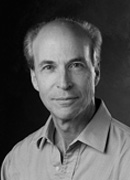Profile
-
OrganizationStanford University
-
Telephone(650) 725-5390
-
Address(s)Roger Kornberg
Department of Structural Biology, Fairchild Building
299 Campus Drive
Stanford, CA, 94305-5126
-
Biography
Roger Kornberg is Winzer Professor of Medicine in the Department of Structural Biology at Stanford University. He completed his B.A. at Harvard College in 1967, and later obtained a Ph.D., in Chemistry at Stanford University, 1972. In Dr. Kornberg’s doctoral research, he demonstrated the diffusional motions of lipids in membranes, termed flip-flop and lateral diffusion. He was a postdoctoral fellow and member of the scientific staff at the Laboratory of Molecular Biology in Cambridge, England from 1972-1975, where he discovered the nucleosome, the basic unit of DNA coiling in chromosomes.
Dr. Kornberg began his research in 1978 at Stanford University, where he has focused on the mechanism and regulation of eukaryotic gene transcription. Notable findings include the demonstration of the role of nucleosomes in transcriptional regulation, the establishment of a yeast RNA polymerase II transcription system and the isolation of all the proteins involved, the discovery of the Mediator of transcriptional regulation, the development of two-dimensional protein crystallization and its application to transcription proteins, and the atomic structure determination of an RNA polymerase II transcribing complex. Awards include: the Welch Prize (2001), the Leopold Mayer Prize of the French Academy of Sciences (2002), and the Nobel Prize in Chemistry (unshared, 2006).
As part of the BioXFEL Center, Dr. Kornberg will provide scientific leadership and research efforts on the mechanism and regulation of RNA polymerase II transcription. His lab will seek to reconstitute the entire process from promoter chromatin remodelling to transcript synthesis with pure proteins and nucleic acids. The goal is to solve the structures of the proteins, and to elucidate their functional interactions. Nanocrystals will be key in circumventing the great difficulty in crystallizing these complexes.




